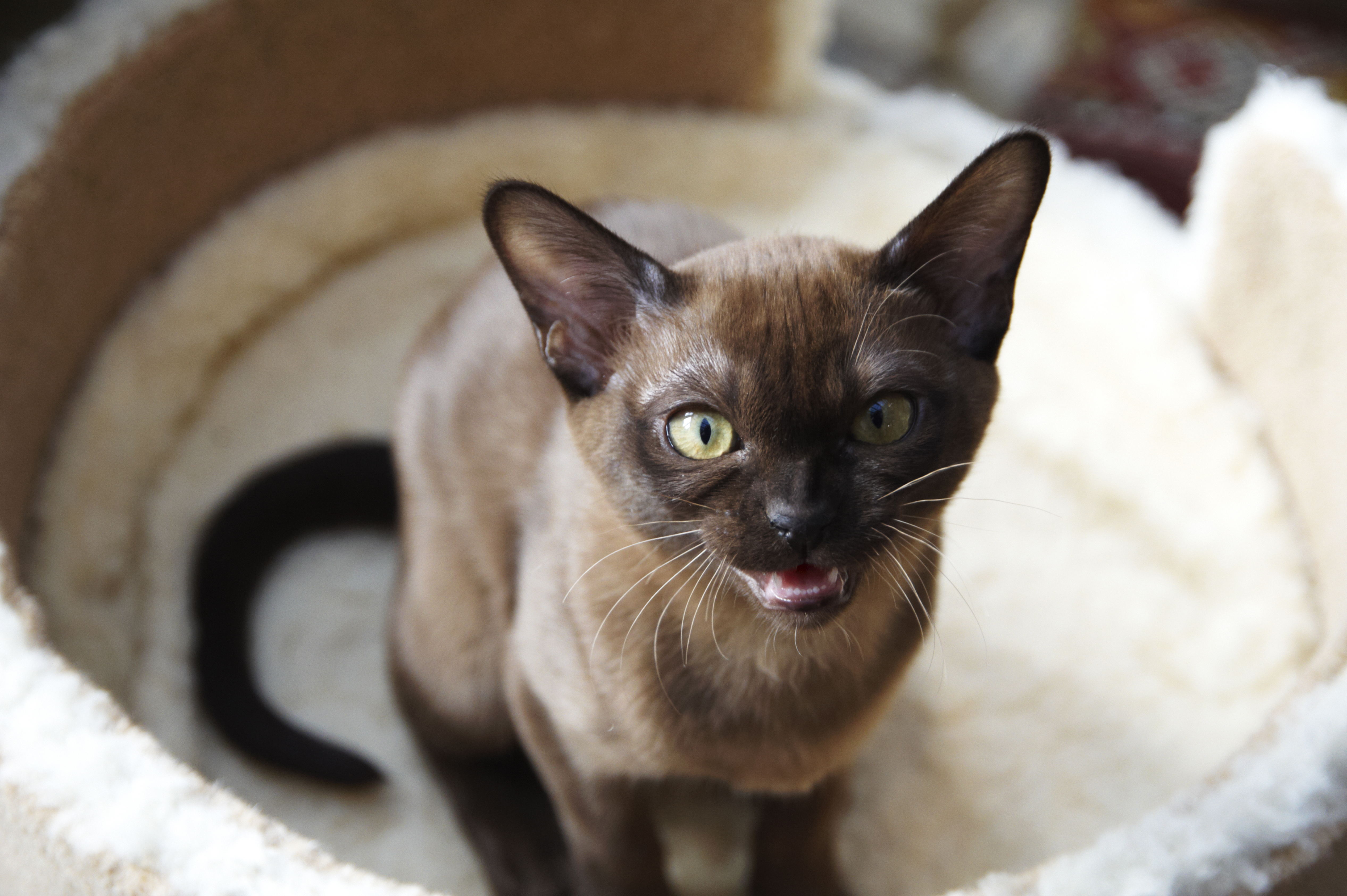HE is on a mission to help our pets . . . and is here to answer YOUR questions.
Sean, who is the head vet at tailored pet food firm tails.com, has helped with owners’ queries for ten years. He says: “If your pet is acting funny or is under the weather, or you want to know about nutrition or exercise, just ask. I can help keep pets happy and healthy.”

Sean helps a cat with kidney disease

Sean McCormack, head vet at tails.com, promises he can ‘help keep pets happy and healthy’
Q) I HAVE an 18-year-old Burmese cat called Bella who has third- stage kidney disease but is not on medication.
For the past couple of months she has started being very verbal throughout the night. Is she in pain?
Do I need to consider having her put to sleep? I would hate to be keeping her here for selfish reasons if she is suffering.
But I feel if I take her to the vet they will suggest putting her to sleep as they said last year she only had months left and not years.
Isla Richards, Sturminster Newton, Dorset
A) Sorry to hear Bella’s getting on and sounding like she’s getting agitated at night.
This could be the early signs that her kidney condition is going further downhill.
But believe it or not it could also be a type of dementia, which cats can get in old age too.
I understand why this happens, but nobody should ever feel afraid to go to their vet for fear of being told to put their pet to sleep.
We will never force you into such a decision.
Your vet will help you prepare and together you can manage her quality of life and make that decision when needed.
Vets are highly qualified to assess animal welfare and advise what’s best, based on your knowledge of Bella, too.
Q) OUR nine-year-old cavalier King Charles spaniel Poppy has a problem with fleas.
She never had any until she was seven, then all of a sudden there they were.
We’ve tried every treatment we can find — spray, shampoo, bomb and natural remedy.
We have a monthly flea treatment subscription.
We even bought a heat lamp trap to see if any rooms were hiding them.
She is shaved short, brushed at least once a week and we have even fenced off our grass lawn just in case that’s where she gets them from.
We are running out of ideas.
Emma Davey, Margate, Kent
A) Adult fleas visible on Poppy account for about five per cent of the problem.
The other 95 per cent are the flea eggs, larvae and pupae in the environment, and until you address that you will struggle to get the problem under control.
Use a vet-prescribed flea treatment religiously every month and don’t allow a gap in treatment.
That would just allow a female flea to lay more eggs.
Finally, blitz the home; hoovering, wiping down skirting and cracks and crevices, throwing out the vacuum contents immediately, hot washing furniture covering and bedding and then using a vet- approved environmental spray to kill any remaining eggs or larval stages.
It will take time but this approach will gradually see Poppy flea-free.
 Tails.com provides tailor-made nutritional food for pets
Tails.com provides tailor-made nutritional food for pets
Q) SHOULD I brush my hamster Hammy?
He’s long-coated and sometimes he could do with a helping hand.
Jane Dale, Newton Abbot, Devon
A) Yes, using a soft brush suited to small furries is a great idea
Not only will it help Hammy avoid becoming matted, but it’s also good bonding time and will get him used to being handled.
Find suitable brushes online or in a good pet shop.
Q) MY five-year-old black cat Tim just ignores me.
He only deigns to acknowledge my existence if I’m feeding him, or if he wants a tickle.
The rest of the time I don’t exist.
I don’t know whether to laugh or be insulted. Any advice?
Tina Wells, Doncaster
A) This is why I’m a dog person — I like my pets loyal and, at times, a little needy.
Only joking, I love cats too but it can’t be denied that some adopt more of a “treat ’em mean, keep ’em keen” kind of vibe.
Tim sounds just like a strong, independent woman!
And maybe he does just need or want you there for food and an occasional tickle.
Or maybe he’s got relationship issues and he’s doing his best. Just enjoy Tim for Tim.
If he didn’t like you, he wouldn’t hang around, I think.
Star of the week
WATER baby pooch Misty is the ultimate “fitness partner” for her retired owners, who have just moved to the country.
The ten-year-old labrador keeps 72-year-old Liz Hopkins active with Nordic walking and regular seaside dips.

Misty is the ultimate ‘fitness partner’ for her retired owners
Liz, of Stickney, Lincs, said: “Misty is the ultimate fitness pal. We recently moved to Lincolnshire and she has discovered the sea.
“She is in the water before the car is even locked. My 63-year-old partner Pete and I recently retired, so she is taking us on lovely long walks in the countryside.
“We have had dogs all our lives, and we have loved them all – but none have made us laugh as much as Misty.”
Expert tips to beat the heat
WITH the risk of more heatwaves around the corner, owners are warned not to let their pets out when temperatures soar.
Charities Cats Protection and the RSPCA are urging owners to keep their pets inside when the sun is at its hottest.

Owners are warned not to let their pets out when temperatures soar
An RSPCA spokesman warned: “Every summer the RSPCA receives hundreds of reports of animals suffering from heat exposure, including dogs left in hot cars, pets with heat burns on their paws from pavements, dehydrated wild animals, grazing animals with no shade, and dogs over-exercised in the heat.
“Exercise dogs in the early morning or late evening when temperatures are cooler – but don’t be afraid to skip a walk altogether if it’s too hot. If in doubt, don’t go out.
“Be aware of the signs of heat-related illness in dogs so you can take action and seek urgent veterinary care as soon as possible if necessary – excessive panting or unusual breathing noise, changes in behaviour and lethargy, stumbling, any blue/grey tinge to gums or tongue.”
Sarah Elliott from Cats Protection added: “Keep pet cats indoors when the sun is at its hottest, typically between 10am and 3pm.
“Provide opportunities for shade outdoors, such as cat hides or large cardboard boxes. And provide an outdoor water source.”
Rob Steele, of global pet company PetSafe said: “Add a little water to your dog or cat’s food. For more reluctant pets, consider a pet fountain.”